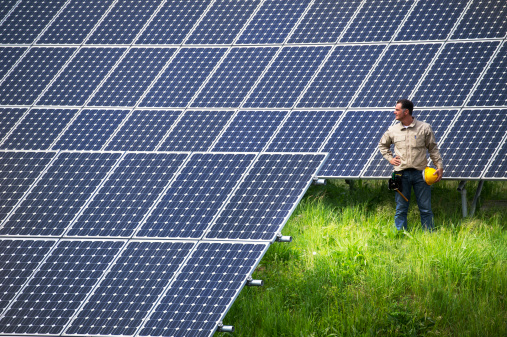
But what does this resurrection mean for investors? With a couple of exceptions, solar stocks hit a peak in 2008. First Solar Inc. (NASDAQ: FSLR) topped $300 a share briefly, SunPower Corp. (NASDAQ: SPWR) topped $125 a share, JA Solar hit $120, Canadian Solar Inc. (NASDAQ: CSIQ) topped $40 and Trina Solar Ltd. (NYSE: TSL) reached its peak of more than $35 in mid-2007. At today’s prices one almost has to wonder if we are talking about the same companies. The only stock trading anywhere near its peak price of six years ago is Canadian Solar. JinkoSolar is near its all-time high again, but it was not publicly traded until mid-2010.
The solar stocks in 2007 and 2008 were the momentum stocks that ethanol stocks were a year or two prior and like 3D printing and fuel cell stocks are today. The China-based solar companies were building new capacity, governments in Europe were offering massive incentives for clean energy projects and it seemed like the party would never end. But like most things that cannot last forever, the solar stock boom didn’t either.
The recovery in solar shares that began in the second quarter of last year has a much better chance of being a lasting change. For one thing, overcapacity has been winnowed out and for another costs at all the solar makers have come down. For another, the overall cost of installing a solar system has fallen, whether a rooftop system or a utility-scale system.
The Chinese makers have also gotten into the downstream project business, where the most of the profit margins are. First Solar and SunPower have had a significant presence in the project design and construction business for a few years now, but the Chinese have just gotten started with initial projects in China and Japan.
Having a solid solar PV industry that is not on the brink of collapse is important if governments are serious about reducing carbon emissions. Electricity generated by burning coal puts more carbon into the earth’s atmosphere than any other single-point source. Every megawatt of solar PV installed either replaces an existing megawatt of coal-fired generation or eliminates another coal-fired megawatt from new construction.
Will the solar PV industry return to the days of $100+ share prices? Maybe, but it doesn’t really matter. The stocks will never be the same kind of momentum plays again. After the recent return to profitability and run-up in share prices, there might be a little more enthusiasm building for getting back into these stocks, and there is likely still growth potential in many of them. But it will not be explosive growth, and it will not last long. Solar energy is a steady, long-term business now.
Travel Cards Are Getting Too Good To Ignore (sponsored)
Credit card companies are pulling out all the stops, with the issuers are offering insane travel rewards and perks.
We’re talking huge sign-up bonuses, points on every purchase, and benefits like lounge access, travel credits, and free hotel nights. For travelers, these rewards can add up to thousands of dollars in flights, upgrades, and luxury experiences every year.
It’s like getting paid to travel — and it’s available to qualified borrowers who know where to look.
We’ve rounded up some of the best travel credit cards on the market. Click here to see the list. Don’t miss these offers — they won’t be this good forever.
Thank you for reading! Have some feedback for us?
Contact the 24/7 Wall St. editorial team.




